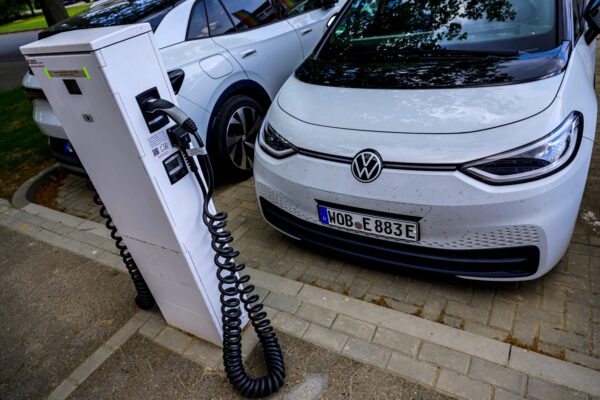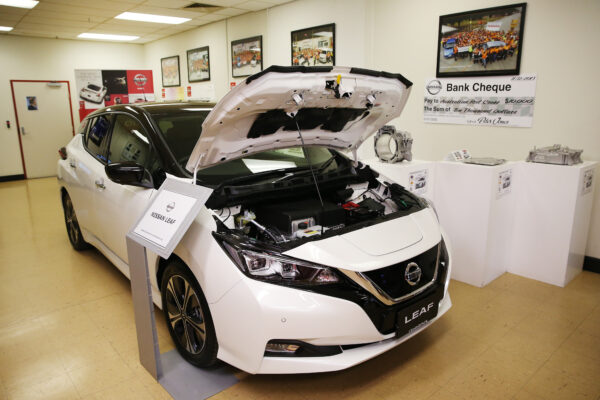A new European law will likely force Australian drivers to adopt electric vehicles (EV) in the next decade, whether they want to or not.
On Feb. 14, the European Union (EU) approved a law that requires carmakers to cut CO2 emissions from new cars and vans sold by 100 percent by 2035.
With 340 votes in favour, 279 against and 21 abstentions, the new law will effectively ban the sale of new petrol and diesel vehicles in the bloc of 27 countries.
In addition, automakers will need to achieve intermediate emissions reduction targets of 55 percent for cars and 50 percent for vans by 2030.
However, the new law will not apply to car brands producing fewer than 1,000 vehicles annually.

While the law will not ban people from continuing to use petrol and diesel cars after 2035, it will likely lead to a significant increase in the total cost of ownership for those vehicles, including fuel, maintenance, purchasing and insurance costs.
The move follows similar restrictions in countries such as China, Japan, Canada and Hong Kong as the EU seeks to make the transport sector–which accounts for one-fifth of the bloc’s total emissions–become “carbon-neutral”.
European Parliament member Jan Huitema said the legislation would encourage the production of zero-and low-emission vehicles as it prompted manufacturers to innovate and reduce their prices.
“Purchasing and driving zero-emission cars will become cheaper for consumers, and a second-hand market will emerge more quickly,” he said.
Although the law was approved, it will need a formal endorsement by the European Council to take effect.
The Impact of the New European Law on the Australian Vehicle Market
While the introduction of the emissions law in the EU may sound irrelevant to Australia, given the geographical distance between the two regions, automobile experts warned that the vehicle market in the country would be significantly impacted.
Jake Whitehead, the policy head at the Electric Vehicle Council, a peak body representing the EV industry in Australia, said the European law would cause petrol vehicles to become much rarer and more expensive to buy, potentially inflating the price of an average car by $17,000 (US$11,700).
Moreover, he said many Australian car buyers could be shocked to discover that petrol and diesel vehicles would likely disappear from the local market in just over a decade.
“We know even America, with a very similar vehicle market to us, is targeting 50 percent EV sales by 2030,” he said in comments obtained by AAP.
Echoing the sentiment, Australian Electric Vehicle Association president Chris Jones said although some drivers might not realise the significance of the matter, many car manufacturers would likely phase out cars with internal combustion engines within the next decade before the ban took effect.
As such, he said local motorists would not have many options left apart from getting a new EV.
“A lot of jurisdictions around the world have realised that 2035 is actually a pretty conservative position for ending the sale of petrol or diesel vehicles,” he said.

Whitehead also said the Australian government would face increased pressure to introduce a fuel efficiency standard so that the country could continue to receive the latest motoring technology while preventing unwanted vehicles elsewhere from getting into the local market.
“The risk here is that if Australia doesn’t choose to stay in line with other similar economies like the US and Europe, we will end up aligned with developing economies and get the same vehicles they’re getting, which could mean lower safety standards,” he said.
Australia to Reach 100,000 EVs Milestone in 2023
The remarks from automobile experts come as Australia saw a sharp growth in the number of EVs sold, which will soon reach the 100,000 milestone.
A recent report (pdf) by the Electric Vehicle Council indicated that over 83,000 EVs were in circulation by the end of 2022, with 39,353 EVs added in the last year alone.
In addition, EVs accounted for 3.8 percent of all vehicles sold in the country during 2022, up from 2.05 percent in 2021.
Tesla continued to dominate the local EV market, with its Model 3 and Model Y accounting for nearly half of the total sales, followed by the Atto 3 model from Chinese manufacturer BYD and the HS+ PHEV model from the Chinese-owned MG Motor.
The Australian Capital Territory led the country in terms of EV adoption, with 9.7 percent of its new car sales being electric, followed by New South Wales and Victoria at four percent and Tasmania at 3.7 percent.
Regarding EV infrastructure, the number of charging stations across the country had surged by 44.8 percent to 4,943 in 2022.
Despite this uptick in EV purchases the Australian Bureau of Statistics notes that in 2021 there were 20.1 million registered motor vehicles in Australia, with 98.2 percent utilising petrol or diesel fuel sources.










